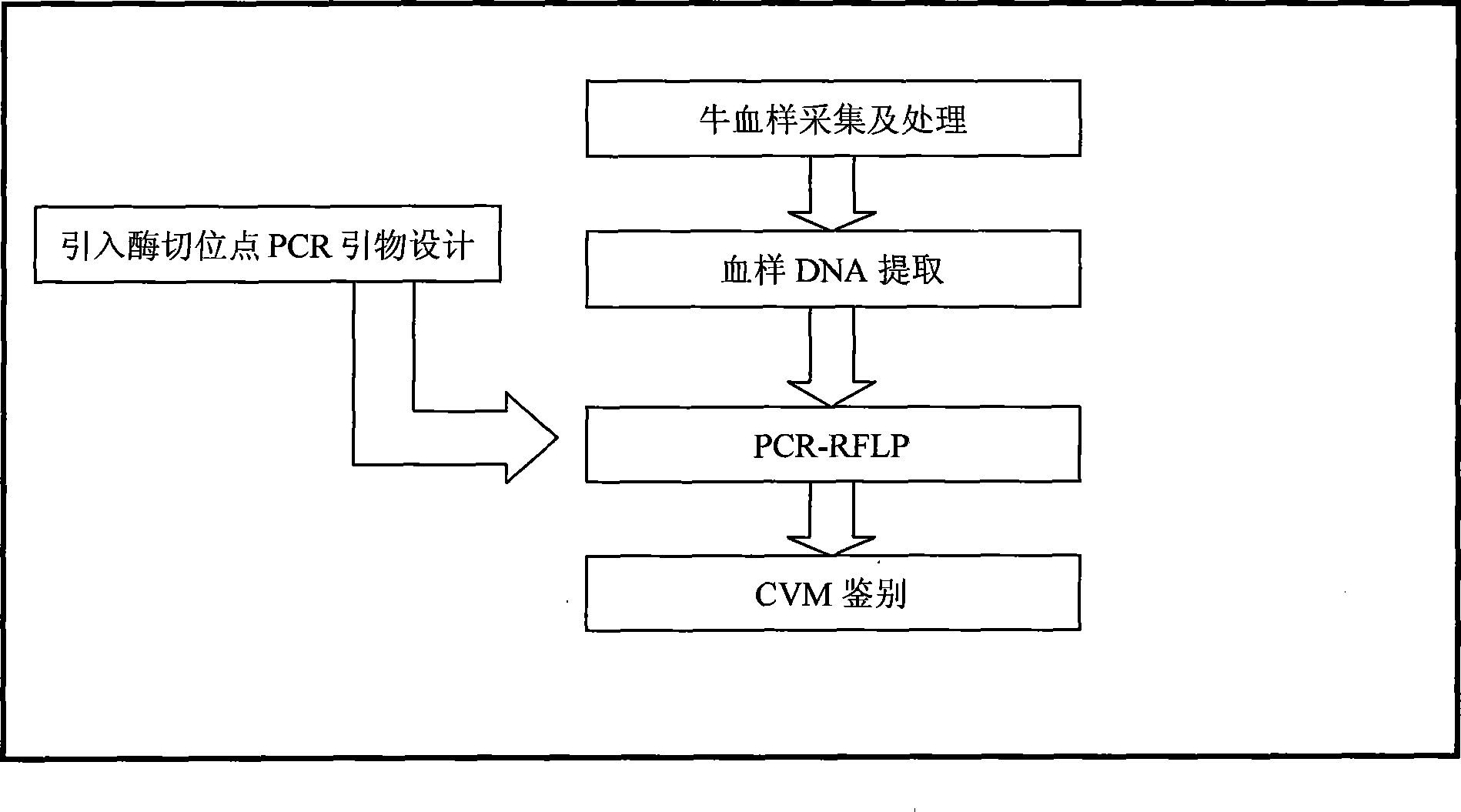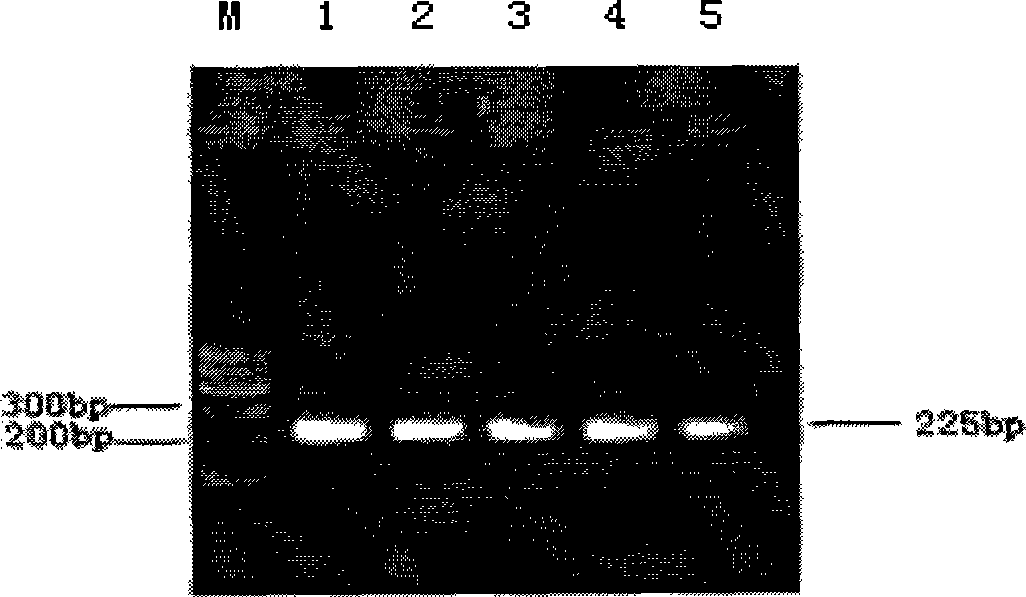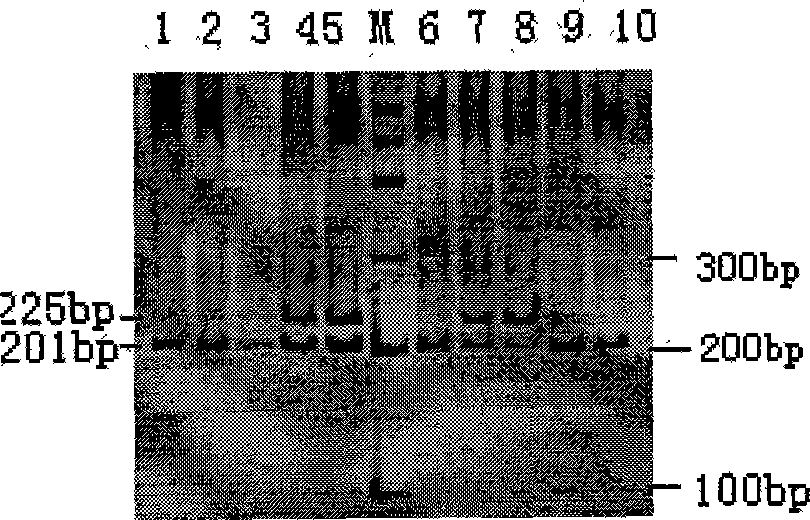PCR-RFLP detection method for complex vertebral malformation of milk cow and crossbred cattle
A syndrome and spine technology, applied in the direction of biochemical equipment and methods, microbial measurement/inspection, etc., can solve the problems of long breeding cycle and low accuracy
- Summary
- Abstract
- Description
- Claims
- Application Information
AI Technical Summary
Problems solved by technology
Method used
Image
Examples
Embodiment 1
[0025] 1. Collection and processing of dairy cow blood samples
[0026] Take about 10 mL of cow blood sample, add 500 μL of 0.5 mol / L EDTA (to make the final concentration 25 mmol / L) for anticoagulation, centrifuge (8000 rpm) at 4 °C for 10 min, discard the supernatant, separate white blood cells, add distilled water, shake well, and rupture the red blood cells. Centrifuge for 10 min and discard the supernatant. After repeating twice, add 1×SET 1mL and 10% sodium dodecyl sulfate to the precipitate (to make the final concentration 0.5%), then slowly add proteinase K (final concentration is 50-100 μg / mL), and place at 55 ℃ for 8-10 hours in a water bath, and stored in a 4℃ refrigerator for later use.
[0027] 2. Extraction of NDA from blood samples
[0028] (1) Cancel the digested sample, add an equal volume of equilibrated phenol (pH 8.0), slowly invert the centrifuge tube for 10 min, and centrifuge at 8000 rpm for 10 min at 4°C.
[0029] (2) Carefully draw the supernatant c...
PUM
 Login to View More
Login to View More Abstract
Description
Claims
Application Information
 Login to View More
Login to View More - R&D
- Intellectual Property
- Life Sciences
- Materials
- Tech Scout
- Unparalleled Data Quality
- Higher Quality Content
- 60% Fewer Hallucinations
Browse by: Latest US Patents, China's latest patents, Technical Efficacy Thesaurus, Application Domain, Technology Topic, Popular Technical Reports.
© 2025 PatSnap. All rights reserved.Legal|Privacy policy|Modern Slavery Act Transparency Statement|Sitemap|About US| Contact US: help@patsnap.com



